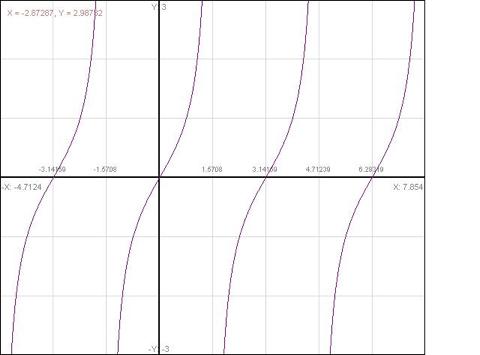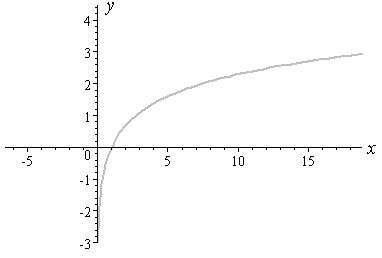| (One intermediate revision by one other user not shown) | |||
| Line 1: | Line 1: | ||
| + | =Periodic versus non-periodic functions ([[Homework_1_ECE301Fall2008mboutin|hw1]], [[ECE301]])= | ||
| + | <span style="color:green"> Read the instructor's comments [[hw1periodicECE301f08profcomments|here]]. </span> | ||
| + | |||
== Periodic Functions in CT - The Tangent Function == | == Periodic Functions in CT - The Tangent Function == | ||
A periodic function is a function that repeats itself after a certain time, called the period. | A periodic function is a function that repeats itself after a certain time, called the period. | ||
| Line 11: | Line 14: | ||
<center>[[Image:tangent_ECE301Fall2008mboutin.jpg]]</center> | <center>[[Image:tangent_ECE301Fall2008mboutin.jpg]]</center> | ||
| + | |||
| + | == Non-periodic Functions in CT - The Natural Logarithm == | ||
| + | A non-periodic function is a function that does not repeat itself after the same amount of time. | ||
| + | |||
| + | An example of this function is the natural logarithm function, shown below. This function is defined for x > 0, and after x = 0, the function increases. | ||
| + | |||
| + | |||
| + | :<center>y = ln(x) | ||
| + | |||
| + | |||
| + | [[Image:lnx_ECE301Fall2008mboutin.jpg]]</center> | ||
Latest revision as of 07:21, 14 April 2010
Periodic versus non-periodic functions (hw1, ECE301)
Read the instructor's comments here.
Periodic Functions in CT - The Tangent Function
A periodic function is a function that repeats itself after a certain time, called the period.
An example of this function is shown below, the tangent function. The tangent function has a period of $ pi $.
$ \tan\theta = \frac{\sin\theta}{\cos\theta}\, $

Non-periodic Functions in CT - The Natural Logarithm
A non-periodic function is a function that does not repeat itself after the same amount of time.
An example of this function is the natural logarithm function, shown below. This function is defined for x > 0, and after x = 0, the function increases.
y = ln(x)


